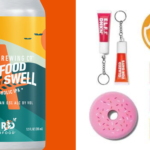You’ve probably heard the old saying, “the customer is always right.” There’s a lot of truth in that statement. Our job as innovators is to listen to what your consumers want and create products that meet those needs.
New products and services are often the results of a problem definition process. To create great products and services, we need to understand what people want or need and confirm that there is indeed a gap between their appetite for solving that problem and what’s available in the marketplace. In this post, we’ll explore why developing a good understanding of this process can help you build better solutions for consumers than your competitors do. Let’s get started!
Observe what people are doing.
Problem definition begins with observation.
The first step to understanding consumers is to observe what they’re doing. The best way to do this is by talking directly with them and seeing how they live their lives, not just what they say. For example, if you’re developing a new product for children’s health care, don’t ask them about their health concerns—instead, listen for clues about the challenges parents face when caring for a sick child at home. Are there any patterns in the ways that people approach treating illness? What are some of the gaps in current treatment options? By looking at consumer frustrations and behavior, you can identify opportunities for innovation and improvement that have been overlooked by traditional research methods.
Develop a curious mindset
A curious mindset is a mindset that is focused on learning. It’s a mindset that asks questions, tries to understand other perspectives and thinks about the problem from multiple angles. It’s important for product managers because it helps us learn about our users.
A curious mindset can help you:
- Understand the needs of your customers better
- Discover opportunities for innovation within products or services
- Create products that resonate with consumers
Collect data
Collecting data on how, when and why people consumer yours or competitor’s offerings, as well as other things people do to solve their problems, will help you understand what products/services are popular and why.
A few ways to collect this information include:
- Amazon Reviews – understand the sentiment around popular products and where you can add differentiation
- Social Media Listening – understand what people are talking about, their pain points and how often these are coming up in conversations
- Interviews – talking with users of your product or service. You can ask questions such as “why did you purchase this?” and “how do you use it?”
- Surveys – asking customers about their experiences with a product or service. For example, what the best part was? What could be improved? If someone would recommend the product/service to someone else? Things like that.
Once you’ve identified true insight-rich problems, don’t be in a hurry to solve them.
You’ve now identified a problem that your users really need to solve. It’s time to get busy and solve it!
Don’t rush into solving the problem right away. You need to make sure you understand the problem well enough before you start solving it.
There are three things you can do at this point: Ask more questions, fill any pressing knowledge gaps, or just think about it for a while (which is usually best). This allows you an opportunity to become familiar with your consumer’s perspective on the issue, which will help guide how you go about solving their problems in the future through product innovation.
Turn insights into fresh opportunities
If you’re the first to market with a great solution, then you have the opportunity to win over consumers with fresh solutions they never knew they wanted.
For example, Athletic Brewing Company was one of the first companies to create an alcohol-free beverage that was brewed just like a beer opening up new occasions craft beer can’t access. They understood their consumer’s desire for mindful drinking and merged this with the resurgence of craft beer to create a new category and fresh opportunity.
With a problem in hand and heaps of curiosity, you can start to identify opportunities to create something new and exciting that will win over consumers! We know it’s not easy! The problem is often hidden deeply and is never presented as clearly as the picture we used for this post. But we do hope these tips are enough to get you started.


